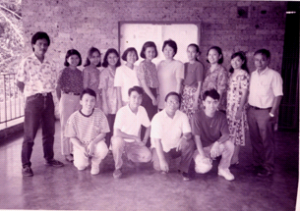In 1950, the Statistical Laboratory at the Central Experimental Station of the UP College of Agriculture was established. This continued on to be known as the Department of Statistics and Statistical Laboratory (DSSL) offering programs in B.S. Statistics (1974) and M.S. Statistics (1977). In 1983, the Institute of Mathematical Sciences and Physics (IMSP) was founded in place of the DSSL. The IMSP was created with the goal of pooling together the manpower and resources needed to develop and create a critical force of expertise in the mathematical sciences within UPLB. In line with the goal to be a more comprehensive university, subsequent programs were established as such as the Computer Science Program (1984) and the Applied Physics Program (1986).

The first discipline to separate was Computer Science forming the Institute of Computer Science in 1995. Three years after, with the approval of the Board of Regents, the Institute of Statistics was established (1998) with the goal of accelerating and intensifying instruction, research and extension efforts in statistics supportive of science and technology. The newly formed institute would function as a separate entity from the IMSP while still being under the CAS Dean. INSTAT would be guided by an advisory board comprising of the Secretary of Socio-Economic Planning as Chairperson, Vice-Chancellor for Instruction as Co-Chairperson, the INSTAT Director as secretary and along with the CAS Dean, two government sector representatives[1] and two private sector representatives.
In its inaugural year the Institute of Statistics had 23 Regular Faculty Members, 14 Affiliated Faculty Members within UPLB, 4 Affiliated Faculty members form other agencies and 7 Administrative Staff. The Bachelor of Science in Statistics included 50 units in the subject matter including the addition of new units i.e. Survey Operations, Practicum and Analysis of Multivariate Data[2]. Its goals were to accelerate and intensify instruction, research and extension efforts in statistics by (a) producing highly trained graduates for the statistical community and other related private and government institutions for carrying out quality and respectable data collection, processing, analysis and utilization (b) undertaking the much needed high-level research and development activities in statistics (c) upgrading the expertise of users of statistics in the private and public sectors through training, workshop and fieldwork and; (d) encourage and promote effective and efficient transfer and utilization of statistical research development results. ~Emmanuel Teodosio Maligalig
[1] Appointed by the UP President; [2] University of the Philippines Los Baños General Catalogue 1991
